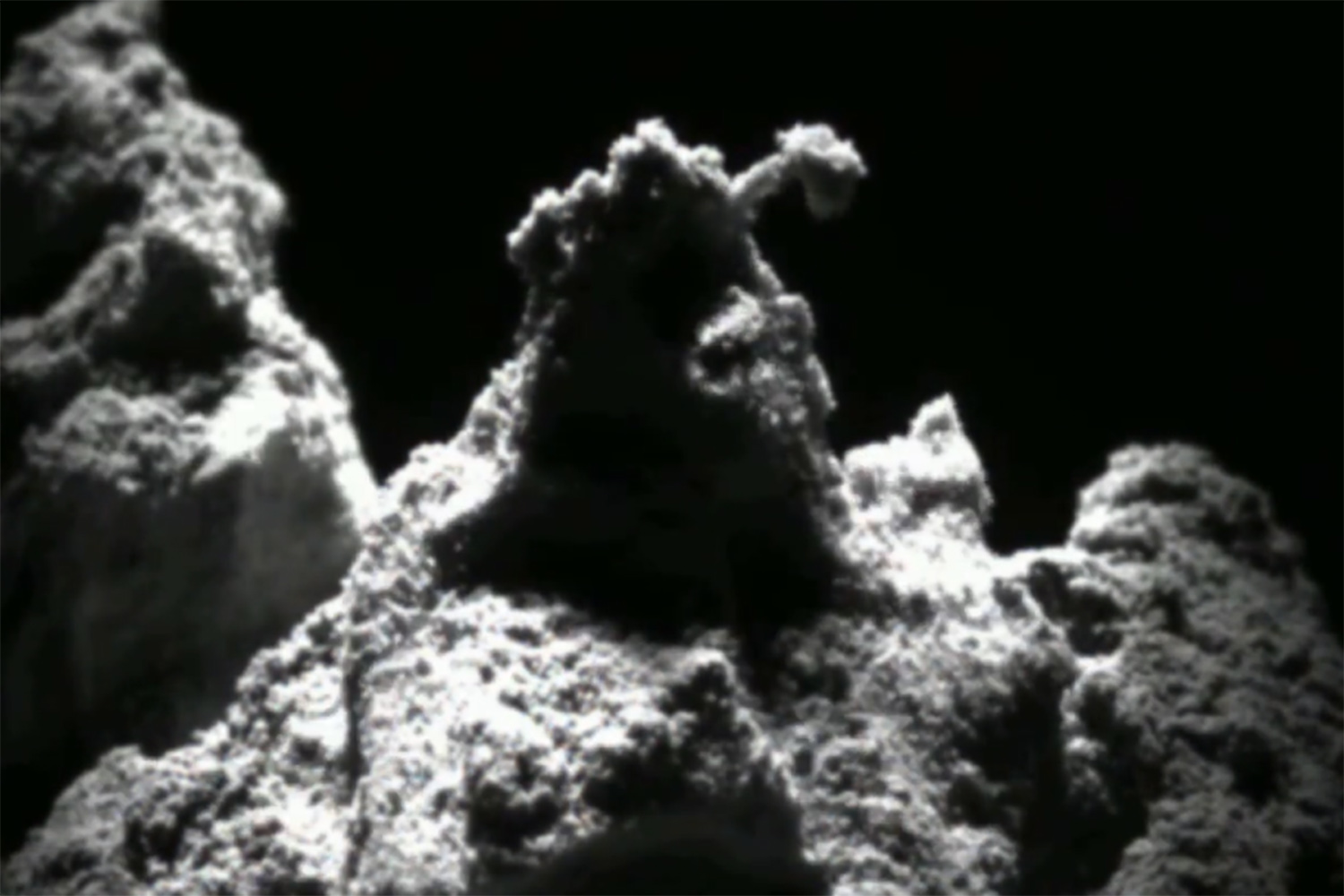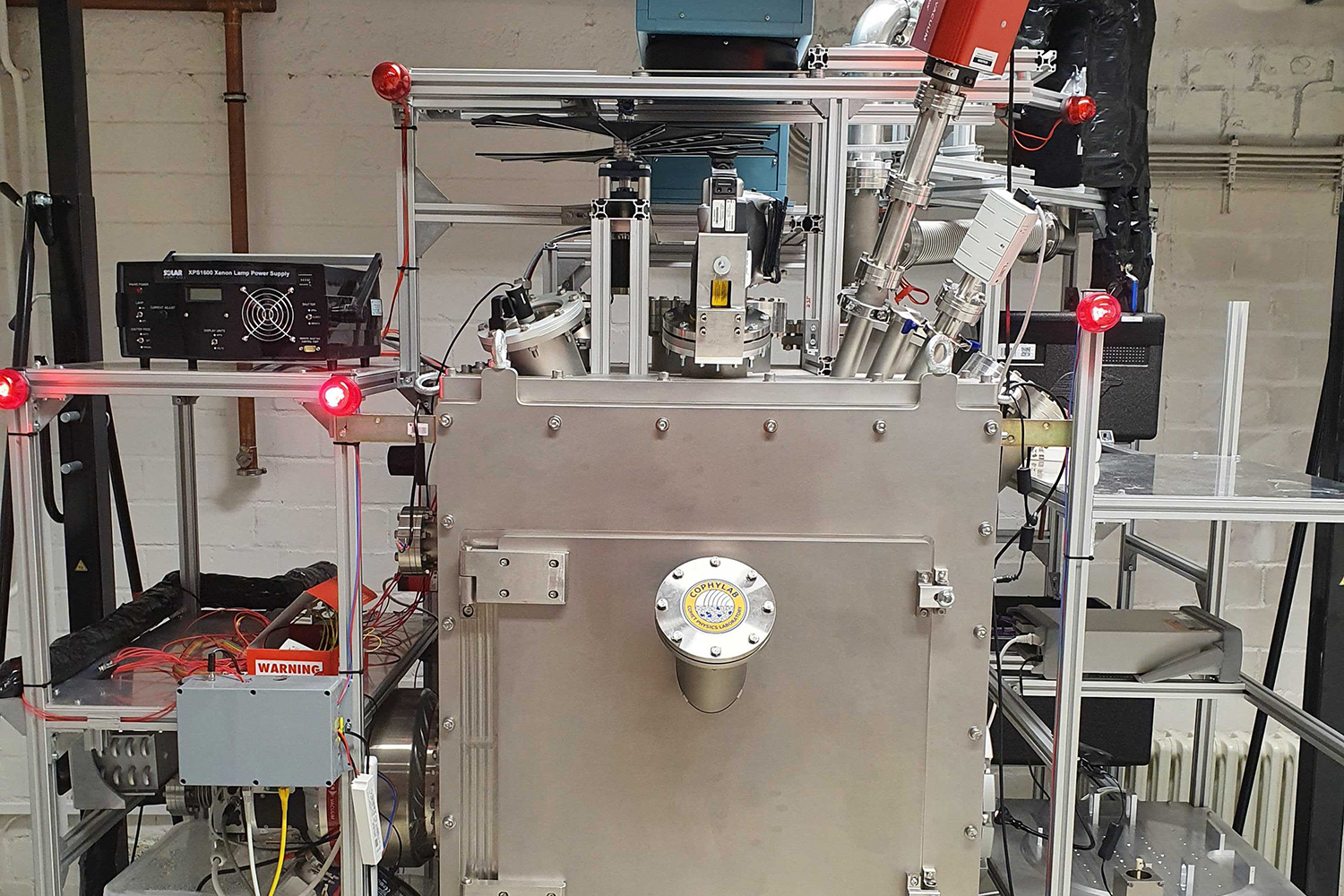Comets in the laboratory Publication on the vacuum chamber awarded as "Editor's Pick"
An international research project on comets was launched at the end of 2018: How did they form and how can comets “eject” their dust? To find out, scientists in Braunschweig have set up a new laboratory. The heart of the project is the so-called L-chamber, a thermal vacuum chamber equipped with 14 different instruments from various partner institutions. The results submitted for publication were apparently so convincing that the associated publication was selected as an “Editor’s Pick” by the Review of Scientific Instruments magazine – a sign of great recognition. Now the project would like to go into the second round.

Dust-ice sample: It becomes clear what cohesion can look like: The material adheres to each other so strongly that abstract structures are created, such as these overhangs, for example. Photo credit: CoPhyLab
“Many measuring instruments are attached to our large vacuum chamber. This was only possible thanks to the international collaboration in the „Comet Physics Laboratory“ (CoPhyLab) project. The chamber is unique in the world,” says Dr. Bastian Gundlach from the Institute of Geophysics and Extraterrestrial Physics at Technische Universität Braunschweig, who heads the CoPhyLab.
The large chamber was completed this summer and is now ready to start work. In total, more than 25 scientists from seven different institutions are now involved in the project.

The thermal vacuum chamber. Photo credit: CoPhyLab
Of course, the researchers would like to continue working together in CoPhyLab: “We have just submitted a follow-up application in the DFG WEAVE procedure (international projects with several project partners),” says Dr. Gundlach. He expects a decision in the second quarter of 2022. The plan is then to investigate, for example, what influence salts and amorphous water ice – a form of solid water that can occur at very low temperatures – have on the activity of comets.
Project data:
The research project “Comet Physics Laboratory” (CoPhyLab) is being led by Technische Universität Braunschweig in cooperation with the Space Research Institute Graz, Austria, the University of Bern, Switzerland, and the Max Planck Institute for Solar System Research, Göttingen. The German Research Foundation (DFG), in cooperation with the Austrian Science Fund (FWF) and the Swiss National Science Foundation (SWF), has approved funding for a total of four positions: three postdoctoral positions for the experiments and one doctoral position for the theoretical support of the project. Two of the scientists work at TU Braunschweig and one position each is located at the Bern and Graz sites. The funding amount of 1.2 million euros will be divided among all partners in the three-year funding period (2018-2021). In addition to the funded institutions, the Max Planck Institute for Solar System Research Göttingen (MPS), the German Aerospace Center Berlin (DLR), Lulea University in Sweden, the “Qianxuesen Laboratory of Space Technologies” in China, and the Open University in England are also involved.
